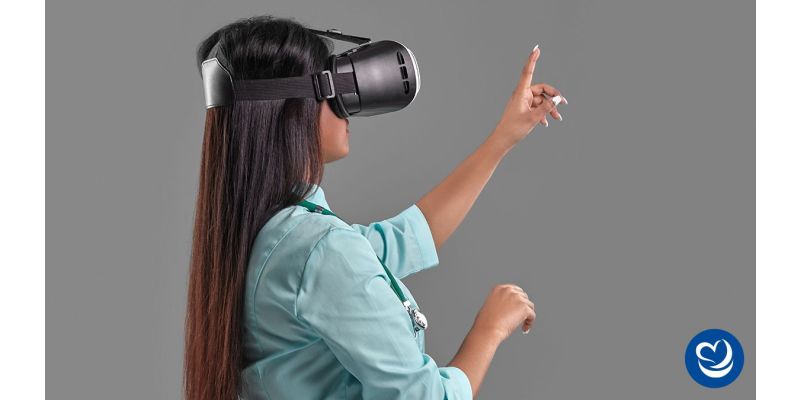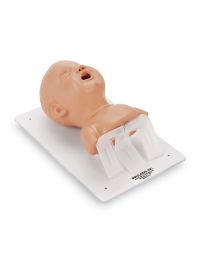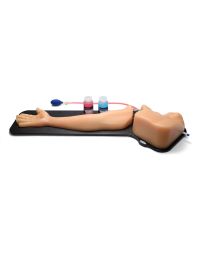Virtual Reality is Transforming Nurse Education
Virtual reality may seem like the stuff of science fiction, but over the last few years it has been brought into reality in video games, schools, and even healthcare education. COVID-19 has only accelerated this transition into virtual reality, reshaping how general and healthcare education has been provided. A new specialty is emerging in the nursing education field; Virtual Reality Nurse Educators are using virtual reality to train their students.
Nursing professionals must meet many job requirements to be certified; learning the latest in virtual reality programming and applying them to a classroom is the duty of a Virtual Reality Nurse Educator. Whether or not you jump straight into virtual reality or stick with traditional nursing education, virtual reality is becoming more and more a part of the healthcare space.
“Learner collaboration inside virtual reality is seamless and efficient,” said Gauthier Dubruel, the Nursing Business Lead at UbiSim, a complete virtual nurse education simulator. “The highly emotional nature of immersive VR makes all the difference.”
Virtual reality offers unique opportunities for learners

For many, real-world training is the standard for nursing education, however research has shown that virtual reality has a place in effective nursing education. One study in Contemporary Topics in Patient Safety showed that an immersive VR simulation experience provided higher levels of communication, collaboration, critical thinking, time management, and problem-solving without endangering actual patients.
“UbiSim is a complete virtual simulation lab. Educators can immerse learns around lifelike patients and maximize their engagement while they develop certain skills,” said Dubruel.
COVID-19 has forever changed how nursing education is provided, including the rise of virtual reality simulations, especially as it relates to the current nursing shortage. One study from the Journal of Professional Nursing found that the effects the pandemic have had on the industry may be permanent. This means that virtual reality education is here to stay.
However, that doesn’t mean that virtual reality education is meant to replace real-world equipment or training. Far from it, in fact.
“Immersive virtual reality is not intended to replace manikins altogether — in fact they compliment each other,” said Dubruel. “To provide a robust learning experience, educators can use a hybrid approach that leverages the benefits of both immersive virtual reality and manikin-based or standardized patient simulation.”
Of course, virtual reality has its limitations. For example, it’s difficult to perform fine motor movements with your hands due to the lack of hand controller technology. This is where a hybrid model can be beneficial, with students learning about general skills and developing their critical thinking, then practicing specific skills in person on manikins that require more tactile feedback.
Virtual reality can be quickly adopted by educators
Cutting-edge technology can be intimidating when updating your curriculum. At this point in its development, virtual reality is predominantly presented to the public as a recreational activity, not a tool for healthcare. Companies like UbiSim are showing that not only is it practical, but it can also transform healthcare education.
One of the benefits of virtual reality is that it can create scenarios that may be difficult to recreate in the real world. UbiSim provides customization of pre-built scenarios and the ability to create new scenarios so the software can adapt to the changing needs of specific nurses and nursing education.
While it may take some trial and error before nursing students are accustomed to using virtual reality, it seems like students integrate with virtual reality education better than some may have thought.
“Nurse learners generally dive right in. A few are sometimes worried that the technology might be too complicated to handle, but they very quickly embrace it,” said Dubruel.
Like any new way to learn things, it can take time for hospitals, nursing schools, or training centers to fully adopt virtual reality. UbiSim and other virtual reality platforms require training before students can truly benefit from the experience. Tutorials and videos explain the main features of the lab with videos and controls shown inside of the simulation.
Despite the initial learning curve, it appears that institutions are quickly adopting the model. Over 10,000 clinical hours have already been completed with just UbiSim alone.
“UbiSim allows programs to scale their simulation activities to supplement clinical hours without the need for experienced nurse educators to supervise the training,” said Dubruel. “Simulation becomes accessible anywhere.”
WorldPoint makes training nurses easier than ever before
WorldPoint carries many simulation and patient care trainers to help in-training and transitioning nurses excel. We hand-select products to feature on our website that offers the durability, features, and cost that our customers expect and need. If you’re in need of patient simulators to train the next generation of nurses, we are here to help.
Some of the best training equipment for nurses are CAE Juno, airway management trainer, and vascular trainer.
Have any questions about WorldPoint?
Chat with us on our website, www.worldpoint.com, send us an email at customersolutions@worldpoint.com, or give us a call at 888-322-8350. We look forward to answering all your questions!











